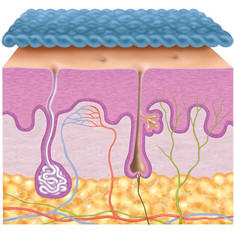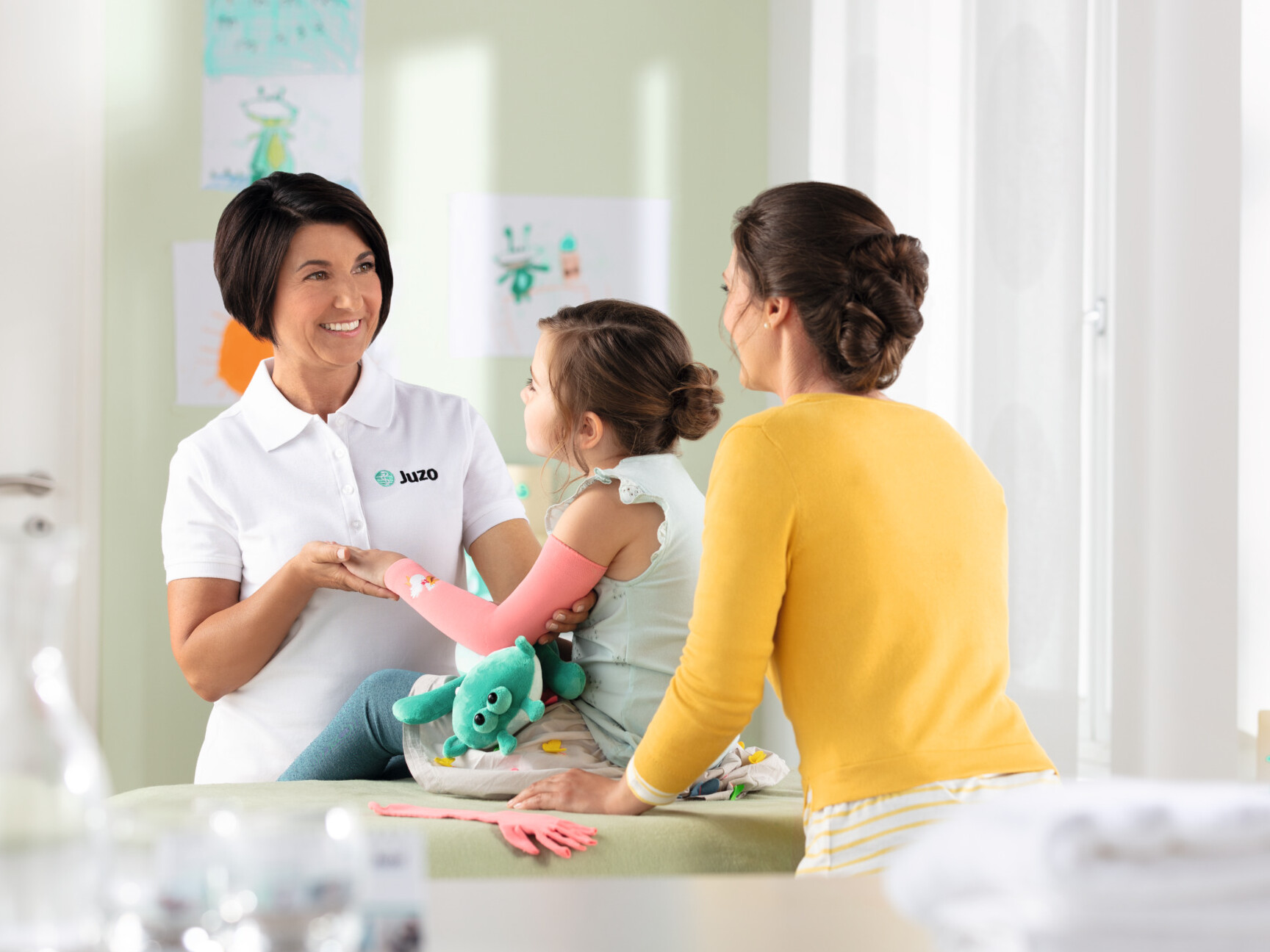How does compression therapy work?
One possible treatment method in scar therapy is the application of pressure (compression) on the scarred area. This can be done using flat-knitted compression garments that are tailor-made for the respective part of the body. Compression has been used successfully in scar therapy for many years. Compression therapy can even benefit older scars as long as the scar in question is still active and is being supplied with blood.
Adjusting the compression garment
If the compression garment fits exactly, it exerts medically effective and constant pressure, considerably helping to improve the scar area. It shouldn’t be constrictive, but it shouldn’t slip either. Specially trained medical products suppliers will take body measurements, which will make it possible to manufacture a compression garment with a precise anatomical fit (such as ScarComfort). The measuring process also determines whether additional extra options like pressure pads need to be incorporated in order to achieve ideal and even pressure in the scarred area. Doctors will prescribe the right compression class – and thus the right pressure intensity – for the treatment in question .

The ideal fit for compression garments
Compression garments sit very close to the body, like a second skin. This is the only way to ensure that the desired pressure can be achieved. Particularly at the start of therapy, putting on and wearing the compression garment can therefore need some getting used to and can also sometimes be unpleasant in the case of relatively young scars. This should not put anyone off, as a satisfying result can only be achieved if one wears the compression garment continuously throughout the day and at night.
With a little practice and handy aids, putting on the garment will get easier with time and wearing it will increasingly become part of everyday life.














